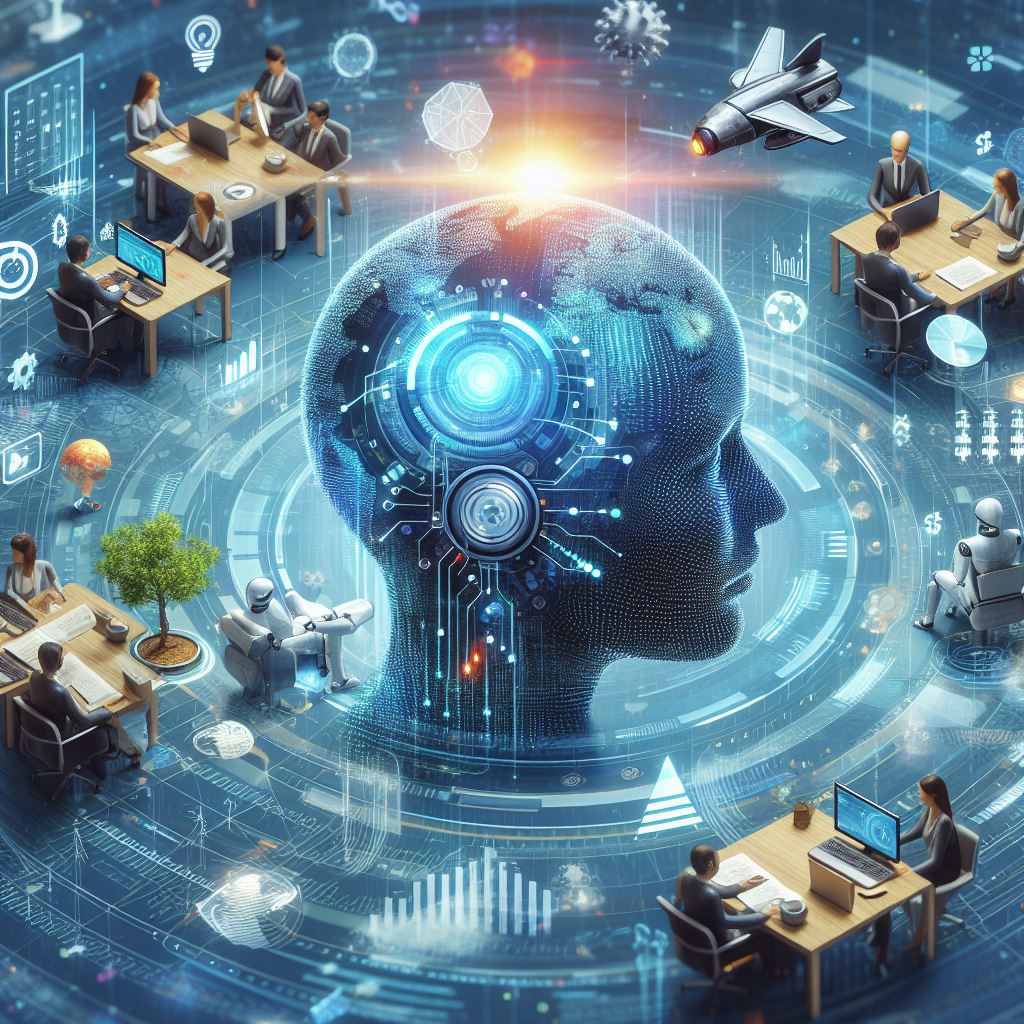Introduction to AI in Design
Artificial intelligence (AI) is increasingly becoming a pivotal force in the design landscape, fundamentally reshaping how creative professionals approach their work. The integration of AI technologies into the design process offers a variety of capabilities that enhance creativity, streamline workflows, and foster collaboration among designers. As designers grapple with the demands of modern projects, AI tools facilitate innovation by providing new avenues to transform conceptual ideas into tangible outcomes.
The evolution of design tools has witnessed significant advancements, from traditional manual techniques to sophisticated digital applications. With the emergence of AI, these design tools have taken on a new dimension. For instance, AI-driven software can analyze data trends, generate design variations, and even propose optimal solutions tailored to user preferences. This ability not only expedites the design process but also encourages designers to explore ideas that might not have been immediately apparent.
Moreover, the influence of AI is evident across various design disciplines—be it graphic design, architectural planning, or product development. In graphic design, AI algorithms can create logos and branding materials, generating designs that align with consumer insights. Similarly, in architecture, AI can analyze environmental factors to optimize building designs, ensuring energy efficiency and aesthetic appeal. These applications highlight how AI serves as a valuable partner in the creative process, allowing designers to concentrate on high-level strategic decisions rather than getting bogged down in repetitive tasks.
Ultimately, the integration of AI into design signifies a shift towards a more efficient and collaborative creative environment. As AI continues to evolve, it promises to unlock new levels of creativity, enabling designers to bring their innovative ideas to life with greater ease and precision.
Popular AI Design Tools
In the rapidly evolving landscape of digital design, several AI design tools have emerged as leaders, providing essential features that cater to a variety of design needs. Each tool offers unique capabilities to assist graphic designers, web developers, and interior designers, enhancing productivity while allowing for creativity.
One of the most talked-about tools is DALL-E, an AI model developed by OpenAI, which creates images from textual descriptions. This tool has gained popularity due to its ability to generate highly imaginative visuals, making it ideal for graphic designers who require unique imagery. DALL-E’s strength lies in its versatility and capacity to evoke abstract concepts, though it may sometimes produce mixed results depending on the complexity of the input text.
Adobe Sensei is another powerful tool that uses AI to augment design workflows. Integrated across Adobe products, this tool automates repetitive tasks, allowing designers to focus on creativity. Its features include intelligent image tagging and automated layout suggestion, simplifying the work for graphic and web designers. However, users may find a learning curve when navigating Adobe’s extensive toolkit.
Canva’s Magic Write enhances design capability by streamlining the process of content creation. This feature uses AI to generate written content, enabling graphic designers to seamlessly add text to their visuals without extensive manual input. While it serves as a time-saver, users should note that the generated text may require editing for coherence, depending on the context.
Each of these tools offers distinct advantages, allowing users to transform their ideas into compelling designs effectively. However, it is essential to consider the limitations and choose the tools that best align with specific project requirements and personal design style.
Case Studies: Success Stories of AI in Design
The integration of artificial intelligence (AI) into design processes has yielded remarkable success stories across various industries. One notable example is the collaboration between fashion designer Adidas and an AI-driven tool, which helped create a new line of running shoes. By utilizing algorithms that analyze consumer preferences and feedback, the design team was able to tailor their products to meet the demands of their target market. The use of AI not only accelerated the design process but also enhanced customer satisfaction by producing a shoe that resonated with wearers’ needs.
In the realm of architecture, the use of generative design software has revolutionized how buildings are conceived. Autodesk’s generative design tools have been employed in projects such as the instalação do Cube, where architects experimented with various design options at an unprecedented pace. By inputting parameters such as materials, budget, and energy efficiency goals, the AI generated multiple design solutions. This enabled architects to explore creative possibilities that would have been time-prohibitive through traditional methods, ultimately leading to a final structure that embodies innovation while meeting stringent performance criteria.
Moreover, the graphic design field has witnessed significant transformations due to AI tools. Take the case of the branding project for a startup, where an AI-powered design assistant was utilized to create a cohesive visual identity. By analyzing trends and consumer insights, the AI suggested color palettes, typography, and logo designs that aligned with the company’s mission. The end result was a brand image that was both modern and appealing, which helped the startup stand out in a crowded market. These examples underscore the increasing reliance on AI in design, illustrating how it not only streamlines workflows but also enhances creativity and effectiveness in achieving design goals.
The Future of AI in Design
The future of artificial intelligence (AI) in design is poised to be transformative, with advancements developing rapidly across various aspects of the industry. As systems become more sophisticated, designers may find themselves empowered by tools that not only enhance productivity but also inspire creativity. Emerging trends indicate a growing integration of AI technologies that facilitate innovative working methods. For instance, machine learning algorithms are increasingly capable of analyzing vast pools of data to identify styles, preferences, and behavior patterns, which can guide designers in creating more targeted and effective outcomes.
In addition to trend analysis, AI is likely to revolutionize the prototyping process. Advanced AI models can simulate countless design iterations in a fraction of the time required for traditional methods. This capability not only accelerates the workflow but also opens avenues for more experimental approaches in design. Human designers will have the opportunity to harness this technology to focus on higher-level conceptualization and problem-solving tasks, thus fostering collaboration between human creativity and machine efficiency.
However, the rise of AI in design also brings ethical considerations that must be addressed. As the line between human creativity and machine-generated content blurs, questions arise regarding authorship, originality, and the value of human input. Designers must navigate these challenges while ensuring that their work remains relevant in an increasingly automated landscape. Emphasizing the unique creative intuition that human designers possess can be vital in maintaining their place in the industry.
Looking ahead, designers who embrace the capabilities of AI while showcasing their distinct human touch will likely find themselves at a competitive advantage. By remaining adaptable and open to technological advancements, the design industry can position itself for innovation and growth, ensuring that the symbiosis between AI and human creativity yields promising outcomes.


 using WordPress and
using WordPress and
No responses yet